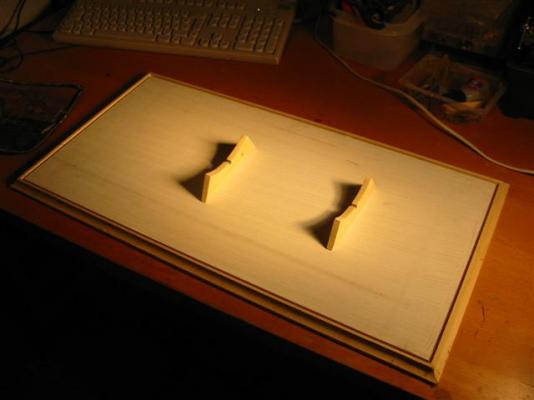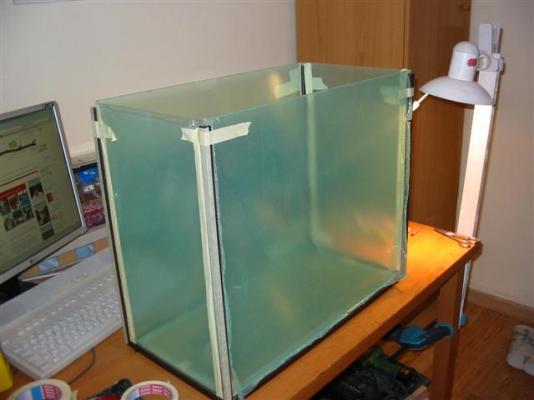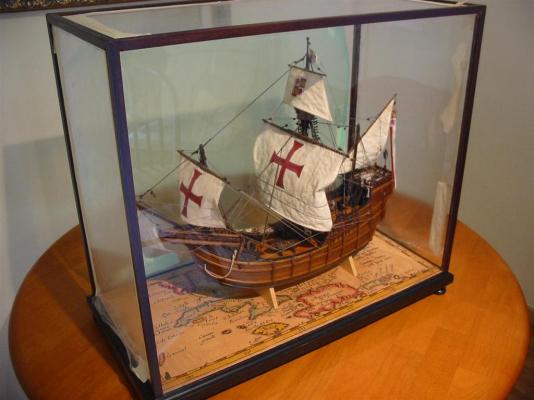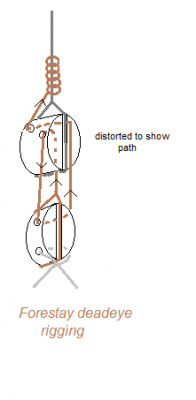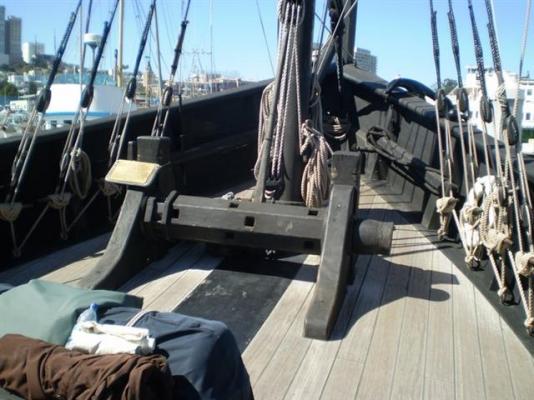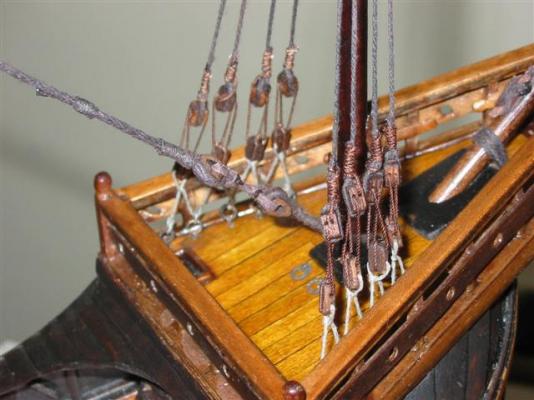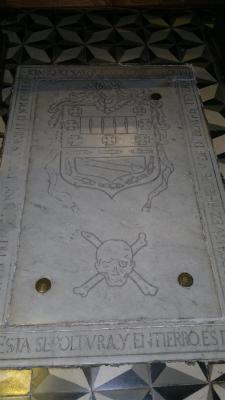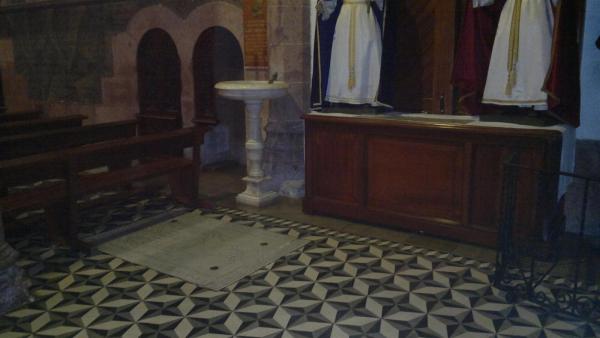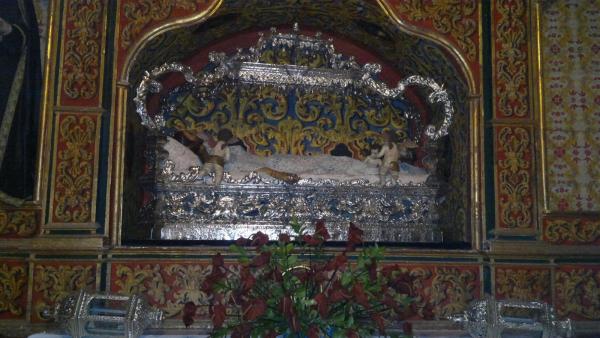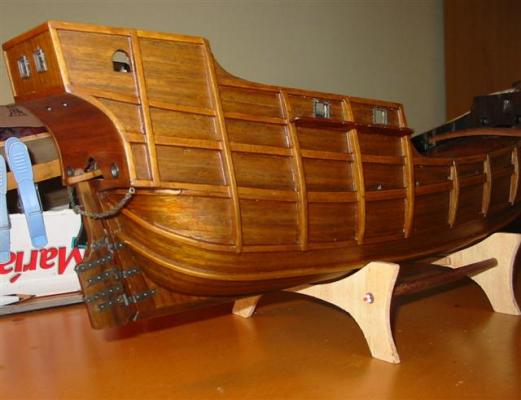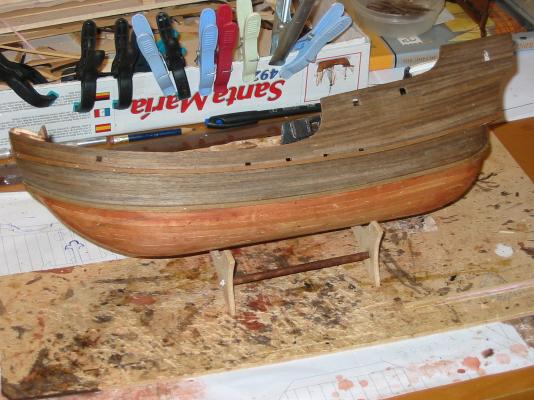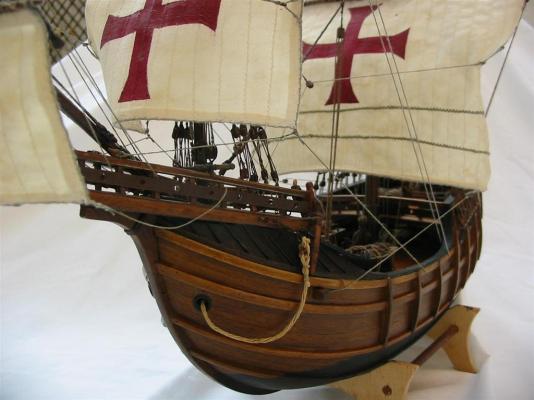-
Posts
193 -
Joined
-
Last visited
Content Type
Profiles
Forums
Gallery
Events
Everything posted by marktime
-

How to build a wood case ?
marktime replied to alexmd's topic in Painting, finishing and weathering products and techniques
AL offer profiled moldings for display cases and that is what I have used in the past. The base is formed with three-quarter fancy moulding and the sides and top with AL profiles fitting 3 mm perspex. As this model was for my grandson in Florida the case was the absolute minimum to reduce air freight costs. The map glued to the base keeps the eye away way from the tight fitting (that's my excuse anyway ). The top corners are compound mitres so they need a little care in cutting. The rest is pretty straight-forward. The model is hanging upside down in the photo fitting the base so everything needs to be well secured! -
-
-
However, whilst it may not be historically accurate, if you add the spacer then I'm sure you'll feel that the dead eyes look better and that seems to be what is important for you. And let me add, the real Santa Maria is lying on the sea-bed off the coast of Haiti and no one really knows what she looked like so your version is as accurate as any other. Your model looks very clean and nicely built so well done. Let's have a picture of her in the gallery when you have finished.
-
First of all thank you for your interest in my post on Amaro Pargo. As a result I thought I would return the compliment and I have read this log through and I have enjoyed your progress. I especially like your way of handling questions on your techniques and I look forward to seeing this build to completion.
-
Thanks for that interesting titbit, John. On further investigation I have found that several Spanish cemeteries have the skull and crossbones motif carved above their front entrances and that this is, as you say, a symbol for death. It becomes clear then that pirates used this on their black flags as a way to intimidate their target: I'm sure the sight of the Jolly Roger would strike fear into the heart of any honest mariner. There is a suggestion that two flags were used, the black to encourage surrender and if that failed, a red to declare that no quarter would be given or asked. The winking skull on Amaro's gravestone can thus be seen as a way of saying that he has cheated Death, for as a devout Christian he would refer us to John 3:16, (which says for you heathens ) " God so loved the world .....that whosoever believed in him should not perish but have eternal life". Again thanks John for prompting my interest. Declaration:
-
There is a little church in San Cristobal de La Laguna, second city of Tenerife, called the church of Santo Domingo where a tombstone lies, just inside the main door to the right, which covers the mortal remains of Amaro Rodríguez Felipe, better known as Amaro Pargo. Pargo is a species of fish called Porgy in English. Here then is a fishy character, all the more strange when we learn his history. Amaro Pargo was a sixteenth century pirate turned corsair, (much in the same way that the pirate known as Francis Drake did the same and now is immortalised as an English hero). It is said that he started his seafaring as a young cadet and quickly showed his astuteness, on one occasion counseling his captain to feign surrender in a confrontation with a marauding pirate and during the chaos and affray, managed to spike the cannons of the enemy. For this action, in spite of his youth, he was given his first command. There is no doubt that he then prospered as a merchant, slaver and pirate for he eventually owned great swathes of land, houses, several vineyards and exported wine and aguardiente to Cuba and Venezuela. At some point he received a royal license to harry English and Dutch shipping thus turning from pirate to corsair, not that I suppose it changed much his modus operandi. As a young man he came under the spell of a nun, 35 years his senior, and they continued a platonic or more likely, a maternalistic relationship until her death. One of the results of this unusual bond was that much of the booty raised through piracy and slave trading was dedicated to the church, especially the poor and so Amaro gained a reputation as a pious Christian, only hanging those unfortunates whom he captured who were not good Catholics, unfortunately again, the majority. His tombstone bears his coat of arms awarded by the king for his continual raids on the English and Dutch fleets who preyed on the Spanish treasure ships returning with rich cargoes from the New World. It portrays a shield with daggers above a single tibia, surrounded by a ribbon of cannons. More unusual is that below the shield is the traditional skull and crossbones which are universally associated with piracy, and this particular skull is even more curious, it winks to us, inviting us to speculate whether he really was what his contemporaries assumed. The side chapel photo shows a recumbent Christ in an ornate canopy cast from solid silver. A legend cast into the base tells us that this work of art was a gift from Amaro Pargo, perhaps some recompense for all the lives he had cut short at the point of a sword and the end of a rope.
-
I wanted a challenge for my Santa Maria so I used the AL kit (which is an introductory level kit) and bashed it based on the Anatomy series by Xavier Pastor "The ships of Christopher Columbus", so it came out, as Jean-Pierre suggests, as a round tuck stern. I used the kit as a material source as I'm a kitchen-table modeller. As I only know AL kits I can't judge the comparative quality but I couldn't fault the timber or small parts but the cannons supplied were not the lombards they are supposed to be.
-
That looks very good, excellent finish on the hull and neat outlining of the poop deck and half-deck hatch.Sometimes it just looks better when you mitre the corners so that's something to think about in the future. Otherwise, well done, the lower planking is almost invisible and would disappear completely if you tarred or tallowed below the waterline.
-
Are you scribing freehand? You seem able to get beautiful parallel lines: if you are not using a former then you are a true sculptor! I'm just echoing what many have already said but it's worth saying again, just incredibly inspiring.
-
Just found your log, I wonder if our mutual friend is reading along. Good innovative techniques and good steals from other builders. Enjoy your move and I'm sure I'm not alone in hoping to see more of your build soon.
- 625 replies
-
- bounty launch
- model shipways
-
(and 1 more)
Tagged with:
-
Like I said, a teaching moment! Congratulations, your response shows maturity and well done for putting your head above the parapet. That I believe sincerely, is the purpose of the build logs. A final note, the Santa Maria was my second build so about where you are now. As you can see from the pic, I chiseled off the planking, a bit of a pain but it came off without too much damage to the first planking. Sanded the last little bits. Of course, you do realise that we'll all be watching your progress on the Jolly Boat with interest.
-
Your response was exactly as it should be. Well done. All the likes and thumbs -ups are great but we only learn by making mistakes. This is a teaching moment and you now have an opportunity to stretch yourself. You can give up or you can say, "if it's worth doing, it's worth doing well". Don't think for one minute that we haven't been in the same position; as Cap'nSteve says, just check out some of my work. Pic posted of a redo. What is it about bending planks that you are unsure of? The curve up to the bow is not too severe, try doing a round tuck stern! I've posted a couple of pics that might help you. I hope you keep at it. All the help you need is here on this forum. Click on the pics to enlarge them
-

water way?
marktime replied to jhl's topic in Planking Techniques's Click Here for Topics dedicated to planking!!!!
When a ship is rolling, water on the deck sloshes around all over the place and is discharged as the ship lists , (hopefully ). -
This will be probably my next project so although you you may not realise it, you are providing a wealth of information for future builders like me. Don't be shy in sharing what might seem trivial, it's probably a new technique to someone like me.Thank you.
- 188 replies
-
- surprise
- artesania latina
-
(and 1 more)
Tagged with:
About us
Modelshipworld - Advancing Ship Modeling through Research
SSL Secured
Your security is important for us so this Website is SSL-Secured
NRG Mailing Address
Nautical Research Guild
237 South Lincoln Street
Westmont IL, 60559-1917
Model Ship World ® and the MSW logo are Registered Trademarks, and belong to the Nautical Research Guild (United States Patent and Trademark Office: No. 6,929,264 & No. 6,929,274, registered Dec. 20, 2022)
Helpful Links
About the NRG
If you enjoy building ship models that are historically accurate as well as beautiful, then The Nautical Research Guild (NRG) is just right for you.
The Guild is a non-profit educational organization whose mission is to “Advance Ship Modeling Through Research”. We provide support to our members in their efforts to raise the quality of their model ships.
The Nautical Research Guild has published our world-renowned quarterly magazine, The Nautical Research Journal, since 1955. The pages of the Journal are full of articles by accomplished ship modelers who show you how they create those exquisite details on their models, and by maritime historians who show you the correct details to build. The Journal is available in both print and digital editions. Go to the NRG web site (www.thenrg.org) to download a complimentary digital copy of the Journal. The NRG also publishes plan sets, books and compilations of back issues of the Journal and the former Ships in Scale and Model Ship Builder magazines.


